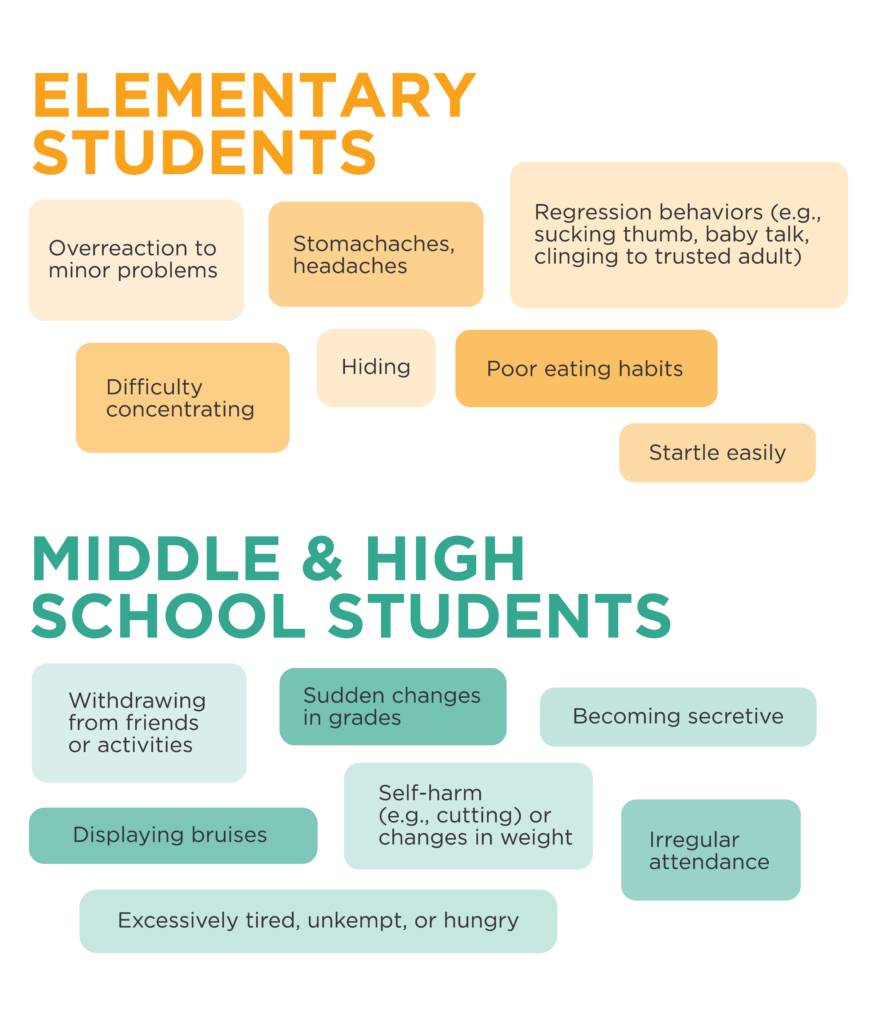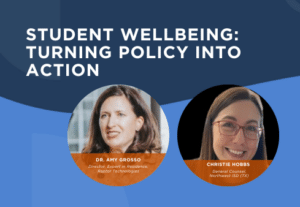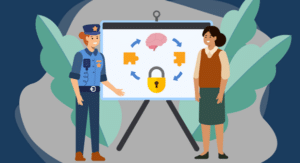Listen to this blog
4 minutes
By: Dr. Amy Grosso, Resident Expert at Raptor Technologies
In December, a colleague and I attended the 2023 Annual Conference on Advancing School Mental Health hosted by the National Center for School Mental Health which is part of the University of Maryland School of Medicine. The conference was filled with over 1000 school mental health professionals who were there to learn best practices and find resources for student mental health.
The experience was, in a word, inspirational. Surrounded by educators concerned about the student mental health crisis, the sessions reflected a deep sense of empathy for a generation of students who are struggling and need answers.
One free resource from the National Center for School Mental Health was the School Health Assessment and Performance System (SHAPE). A public-access, web-based platform that offers a workspace and targeted resources to support school mental health quality improvement, schools utilizing this resource can use these tools and best practices to increase support for students.
To go along with SHAPE, they also released seven revised School Mental Health Quality Guides in January 2024. In a time when there is an ever-increasing need for schools to not only recognize students struggling but also provide services, the resources provided in these guides are invaluable.
Let’s take a closer look at what they offer.
The School Mental Health Quality Guides
Each guide provides not only best practices but also easy-to-follow instructions with clear examples. These free resources benefit any district regardless of where they are in providing mental health support to students.
1. Teaming: It’s critical school mental health team members aren’t working in silos—and that all stakeholders are included. This guide lists key individuals to include in the team along with how a school team will look different than a district team. A sample MOU is provided to guide districts in partnering with community mental health agencies.
2. Needs Assessment and Resource Mapping: Assessing district needs and resources related to mental health support for students is an important step for improving those supports. The Needs Assessment and Resource Mapping guide enables schools to identify gaps and make critical decisions on how resources need to be allocated.
3. Screening: While many districts have universal screeners to assist in supporting student mental health, it is critical to have a comprehensive plan in place. The screening guide lays out the specific steps to develop a plan, including the critical follow-up process with expected timelines for responding to students.
4. Mental Health Promotion Services and Supports (Tier 1): Tier 1 mental health supports are supports for all students and include strategies for:
- Mental health education,
- Character lessons,
- Positive behavior,
- Educator well-being, and
- School climate.
This guide also includes information on restorative practices and the need for reducing exclusionary discipline practices. The last section of the guide focuses on the need for fidelity monitoring of tier 1 systems.
5. Mental Health Promotion Services and Supports (Tier 2 & 3): Tiers 2 & 3 focus on providing services to students who are experiencing mild distress and significant distress, respectively. The guide provides best practices and examples for both tiers, including the role of training and professional development for staff.
As in the guide for tier 1, there is a discussion on fidelity monitoring with an emphasis on creating protocols for students experiencing a mental health crisis at school.
6. Funding and Sustainability: While the need for schools to provide mental health support to students has increased, unfortunately funding for schools does not match the need. This guide provides information on different grants and federal funding sources plus tips on retaining qualified mental health staff. In addition, there are best practices on maximizing support from local partners.
7. Impact: Documenting the impact of investments in mental health support is vital for continued support and funding. The final guide offers practical steps on how to document and report the impact of services, including how these services impact student academic achievement.
Strategies for Safeguarding Student Wellbeing
Providing mental health support to students can seem overwhelming—after all, the challenges to student wellbeing extend beyond the extremes of suicide risk management and behavioral threat management. From homelessness, abuse, and addiction to divorce, illness, and loss, the influences on student wellbeing come in all forms.
Resources like the National Center for School Mental Health provide step-by-step guides for all aspects of mental health. Training all school staff to recognize the low-level concerns indicating a student is struggling is the first step to school counselors being able to provide timely interventions.

Learn more about low level concerns and access additional resources and strategies in Raptor’s free guide on student wellbeing.

Dr. Amy Grosso
After completing her Ph.D. in Counseling and Counselor Education at The University of North Carolina at Greensboro, Dr. Amy Grosso began her career as a mental health counselor at Wake Forest Baptist Health. After accepting her position as the Director of Behavioral Health at Round Rock ISD, Dr. Amy’s accomplishments include:
- Creating the Behavioral Health Services Department, including the hiring and oversight of a team of social workers—and the first-ever social worker dedicated to supporting staff.
- Assisting the establishment of the Round Rock ISD Police Department and specifically designing how social workers work in conjunction with police officers.
- Overseeing the implementation of threat assessment and comprehensive suicide protocols.
Dr. Amy serves on the National Chapter Leadership Council of American Foundation for Suicide Prevention. She co-authored the book Schoolwide Collaboration for Transformative Social Emotional Learning, August 2021.
Related Resources
Guide to K-12 Student Wellbeing
Strategies to Recognize, Document, and Support Students in Distress
Listen to this blog
4 minutes








